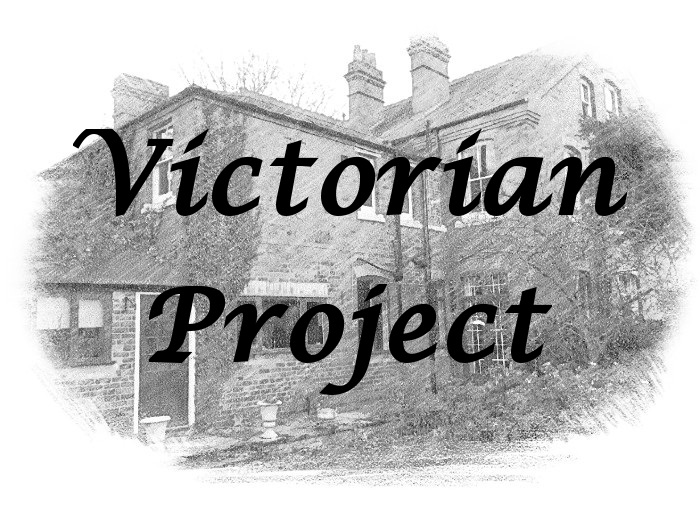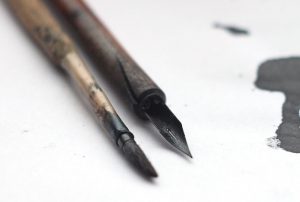If you are looking to paint directly onto lime plaster then you should use a breathable paint. As lime plaster itself is breathable it absorbs and expels moisture depending on atmospheric conditions and blocking it up with a standard emulsion will stop this process. Compared with standard emulsions the breathable paint for lime plaster selection is somewhat limited. We spent a great deal of time looking at the options before making our selection and in this article we give you our findings. We look at the key breathable eco friendly paint choices on the market today.
What is the Victorian Project all about? Find out here.
Reasons For Using A Breathable Paint
There are two main reasons for using a breathable paint for lime plaster walls. First and foremost it will compliment the moisture management properties of the plaster itself and help you to reduce the signs of damp. Secondly as breathable paint tends to be mineral based they are far more ECO friendly. [See also: Fix Damp in Victorian Houses and the Common Causes]
Please note however that in most cases they are not 100% clean of chemicals. If you assess the data sheets of the breathable paint options you will see terms such as low VOC or minimal volatile organic compounds meaning that they do contain some. That said they are the most ECO friendly of the paint ranges you can choose from. [See also: Should Lime Be Used for Victorian Houses? Lime vs Gypsum Plaster]
Types of Breathable Eco Friendly Paint
There are different types of breathable paint all made from different base minerals. In the text that follows we will look the three main players and discuss the pros and cons of each. We have used two of the three paint types ourselves and the information provided for the third is based on our own research when making our wall paint selection. All three paint types are water based.
Lime Wash
Key Brands: Little Greene, Farrow & Ball
Average UK Price: £59 5L **Note: This price is for coloured lime wash. White is more common place and available at a fraction of this.
Perhaps the most common and widely used breathable paint for lime plater is a lime wash. It of course makes perfect sense to use a paint made from the same porous mineral as the plaster itself. Lime washes in different forms have been used for many years and you can even mix your own by watering down a lime based putty.

Advantages: A lime wash will provide you with a traditional finish and will work well to deter mould on your walls. It also has a very quick drying time and should be fully touch dry within a couple of hours. It is now available in a range of colours. If you want your walls white then using lime wash would in fact be cheaper than a standard emulsion and a fraction of the cost of using the other mineral based paint options in this post. Colours are more expensive.

Disadvantages: When compared with the other two breathable paint options discussed it is the thinnest in consistency. To achieve the true colour you need to layer it up and apply a number of coats. One of the leading lime wash manufacturers above recommends a minimum of 4 coats which will take you a considerable amount of time to do a large room! You may also need to buy it in higher quantities due to this. The quality of a lime wash finish can be affected by atmospheric conditions. Two adjacent walls painted on different days may show a slight finish difference if one dried faster than the other.
Clay Based Paint
Key Brands: Earthborne
Average UK Price: £66 5L
Next up is the clay paint with a different key mineral ingredient. Whilst seemingly less common than lime wash it seems to be growing in popularity with ECO friendly minded renovators. It is far thicker in consistency to a lime wash and as a result requires fewer applications. It has a real ‘earthy’ smell to it which is far less offensive than other paints. [See also: Remove Stubborn Wallpaper – Stripping Back]

A quick Google of clay paint and you will see that Earthborn seem to be out on their own with this product but even so at the time of writing there is a selection of 72 colours available in their clay paint range.
Advantages: Being thicker in consistency than the other paints in this article fewer coats are required. It is also the most ECO friendly of the breathable paint for lime plaster options and produces non-offensive fumes. A good clay paint will better mask hairline cracks in a plaster surface and hide minor imperfections. [See also: Victorian Roof Repairs – Starting Point for any Renovation]
Disadvantages: Firstly as there are relatively few manufacturers of this type of paint there is less brand choice. It seems pretty much Earthborn or Earthborn. In the rooms that we have used it in we have found that it is not so good with stains/marks and touch-ups are very difficult. [See also: Open Up A Fireplace & Log Burner Installation]
Chalk Based Paint
Key Brands: Annie Sloan, The Traditional Paint Company
A chalk based paint will give you a highly matt finish and as the name suggests has a rather chalky traditional effect to it. Similar to the clay paint (although not quite) it has a decent thick consistency to it resulting in fewer applications needed. One of the great features of chalk paint is that it hardly has an odour to it and is very inoffensive to use. [See also: Broseley Serrano 7 SE Review – Our Log Burner]
Another great benefit of chalk based paint is that it is considered self priming. If you are looking to use it on timber in your room or pieces of furniture you can paint it straight on as long as the area is clean. It is also very good at retaining its colour over time and provides a high degree of longevity. [See also: Ivy Invasion – Removal from Bricks, Roofing & Gutters]
Advantages: Decent consistency meaning few applications needed and with very little odour. Can be used on many different surface types with no primer necessary. Great colour retention. [See also: Should I Get A Building Survey & Are House Surveys Worth It?]
Disadvantages: A distinct finish that may not appeal to all. A limited number of UK suppliers.
Breathable Paint For Lime Plaster – Roundup
So there are some of the main types of mineral based paint options available and some of the key brands. When we painted our first lime walls we started out using lime washes as they are quite common and easy to acquire but now favour the clay paint. We found the clays easier to use as fewer coats are required and we prefer the finish they provide. The thicker consistency better makes the imperfect lime plaster. [See also: 10 ‘Gotchas’ when buying a Victorian House – Knowledge is Power]
Although we found it to cost slightly more per litre in the UK than lime washes, with the fewer coats required overall its very similar in price to do a room. This is with the exception of white. If white is your chosen colour then a white lime wash costs peanuts.
We are yet to try a chalk based paint but it would be a good choice if you want to include elements of timber in your wall painting such as beading or skirting boards,
As mineral based paint in considered niche these days you can expect to pay a little more for it than you would for an off the shelf emulation but if you are painting lime plaster then you definitely should invest. Its breathability will reduce moisture build up and being a more ECO friendly paint choice you will be doing your bit for the environment.


